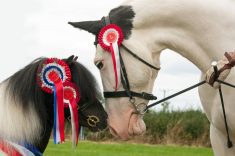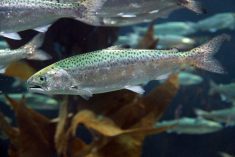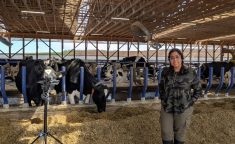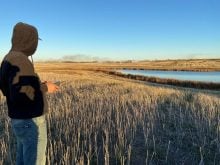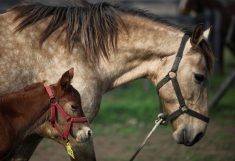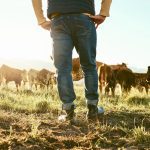Cattle are often maligned for their contributions to greenhouse gas levels, but Agriculture and Agri-Food Canada’s Tim McAllister says that’s wrongheaded.
“We hear about people advocating for the need to eliminate livestock from agriculture production, basically without really understanding the negative connotations that would have,” the researcher said during a University of Manitoba webinar in August.
“We really need to be thinking about how we’re going to integrate livestock [and] cropping systems together.”
Why it matters: Champions of adaptive grazing say that understanding the importance of cattle in terms of sustainability can help producers maintain ecological balance and agricultural productivity.
Read Also
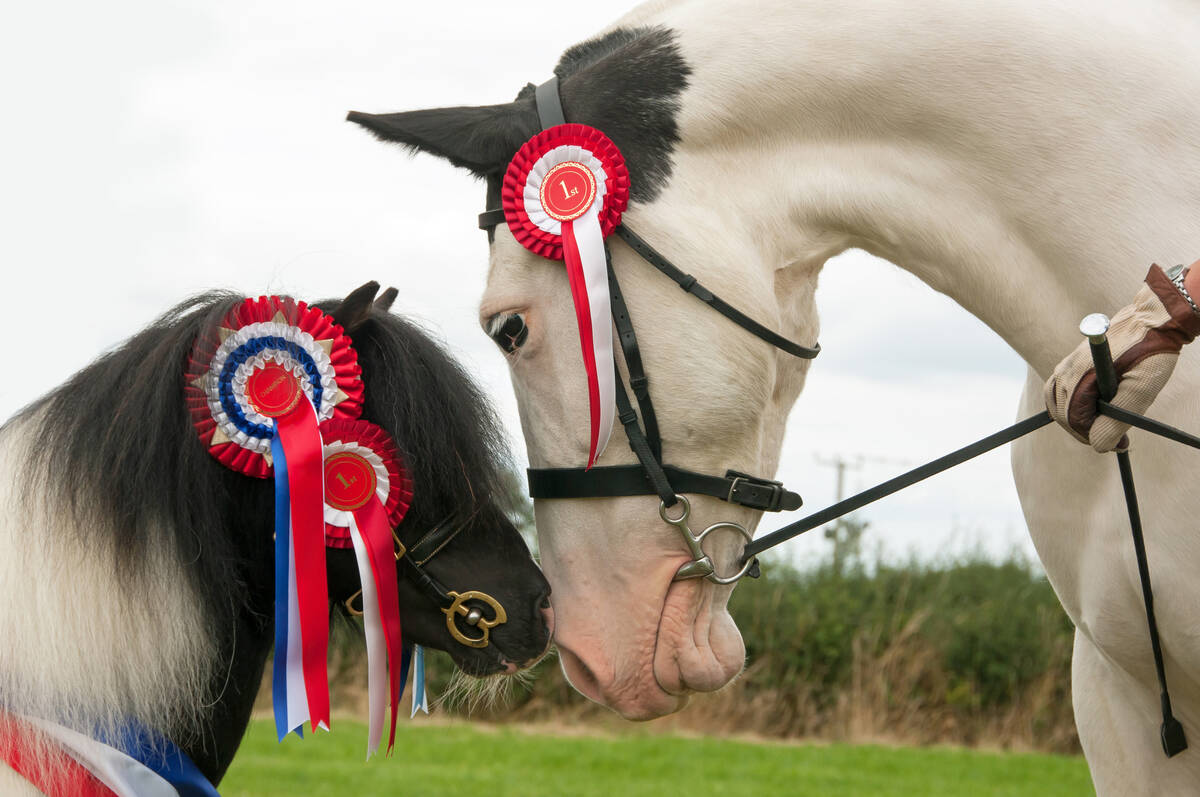
Linebreeding horses drives genetic bottlenecks
Too much linebreeding and prioritizing pedigree can narrow genetic diversity and lead to horse health problems in future generations.
McAllister is a principal research scientist at AAFC’s Lethbridge Research and Development Centre in Lethbridge, Alta. He has given scientific talks around the world on the sustainability of ruminant production systems and is developing guidelines for a quantitative biodiversity assessment of the livestock sector.
“Pretty well the entire grassland ecosystem of North America was occupied by between 30 and 60 million bison that were on the land,” he said. “And, of course, those were extirpated in a relatively short period of time, less than 20 years.”
The resulting lack of manure production removed a vital food source for arthropods (bugs like dung beetles), which in turn reduced food supply for birds and other predators up the food chain.
“It really had a devastating impact on the grassland ecosystem,” McAllister said.
Development of agriculture in North America then saw much of that natural grassland converted to farms and cultivated fields.
Those grasslands were a “huge store of carbon,” McAllister said.
He believes grazing cattle have a major role to play in sustaining the grasslands that remain, and those landscapes, in turn, are critical to meeting Canada’s climate change targets.
“Grazing cattle have many characteristics and behaviours in common with American bison,” he said. “They’re not absolutely identical, but identical enough that cattle can support a similar ecosystem.”
Good for one, good for the other
Biodiversity and the carbon cycle are intertwined, McAllister said, and greater biodiversity creates a more efficient carbon cycle. The type of grazing system impacts both. He pointed to a study done in Stavely, Alta., in that province’s Porcupine Hills, to illustrate his point.
The study observed different levels of grazing over 60 years. Researchers monitored light and heavy continuous grazing, not rotational grazing. Despite that, McAllister noted, results showed how different management styles had different effects on soil carbon and emissions.
“With light continuous grazing, they end up with more emissions because the cattle are eating lower-quality forage than they would be with the heavy grazing condition,” said McAllister. “But when you look at the amount of soil carbon sequestration, it was higher with the light continuous grazing relative to the heavy continuous grazing.”
That same study showed that heavy grazing can have a negative effect on biodiversity, but McAllister linked that to lack of consideration for rotational management.
“It’s less clear what impact it would have if you had heavy grazing and then allowed the area to sit dormant or not be grazed in the following year, mimicking what the bison would have done, where they would heavily graze areas, move through, and maybe not return to that area for two or three years.”
If that aspect were studied, he would expect a more positive picture on the relationship between cattle and biodiversity.
By his measure, cattle are critically important to biodiverse grasslands. Cattle impact depends on what they eat and what comes out the back end, as well as how they trample what they don’t eat. All of this depends on management.
“At an optimal density, you have disturbance and trampling of nutrients, which alters the ecosystem as well as contributing to diverse plant communities both above ground and below ground through those root systems,” McAllister said.
“If they consume seeds, they’ll spread those seeds as well across the landscape at the same time, all helping to increase soil organic matter, which will increase that water holding capacity, fertility, and the ability to produce food from these lands.”
Manure “still plays a really important role in terms of nutrient cycling,” he added. “Taking cattle out of a grazing ecosystem will result in a reduction in biodiversity.”
Location, location, location
Continuous heavy grazing is not a recommended land management strategy, McAllister said in an interview with the Co-operator but rotational grazing can encourage healthy biodiversity while replenishing carbon in the soil. It also delivers economic benefits through increased forage production, resilience and livestock-carrying capacity.
Rotational grazing strategies can differ depending on location.
“The key thing, if you’re going to use a rotational grazing system, is that you have to adapt it to consider the geological or geographical location you’re in,” McAllister said.
READ MORE: Rotational grazing training ground
“In southern Alberta, where I’m from, on the southern grasslands, you might get rain in May and June, and it might not rain for the rest of the season. After you move the cattle off, there’s no sense in putting them back onto that paddock, because nothing is going to have grown.
“Rotational grazing would be more easily implementable in Manitoba than it would be in southern Alberta.”
Historical weather patterns bear that out, but Manitoba Forage and Grasslands Association board member Amber McNish also noted Manitoba farmers in recent years haven’t been able to rely on typical rain.
“We’ve come off some pretty dry years and drought-like conditions. So maybe that rest period is looking more like a whole season, 90 days, or you’re not going back until the next spring, when we’re getting more rainfall,” said McNish, who incorporates rotational grazing on her family’s 120-head operation in Lyleton, Man.
That compares to the more typical 60-day rest period that McNish says many rotational grazing operations have targeted in the past.
“You can go in early spring, and then you give it that 60-day rest, and you can still get in there before the snow comes in the winter.”
Making it work
McNish doesn’t discount the need to tweak rest lengths and movement frequency based on herd size and farmer goals.
“If you have a 300-head herd on a very large acreage, you’re not going to be moving them as often,” she noted.
In comparison, the prospect of moving a 20-head herd more often is more practical, and keeps cattle from constantly grazing regrowth.
Cows will opt for young, fresh growth over more mature plants, which starts a cycle in which plants have little time to recover before being chomped again.
If greater biodiversity is the goal, however, then hard, bison-emulating grazing might be a goal.
“You can graze right to the ground, essentially,” said McNish. “Then you give it that 90 days, or a full season’s rest, and when you go back the following year, you will have some really great regrowth.”
A more intensive graze also forces cattle to eat things they would normally walk past.
“There could be some quack grass that those cows have chosen never to eat for four years. But when they do that hard, heavy, intensive graze, it gives everything a fresh start to regrow,” McNish said. “So, you’ll see different plants thrive in that scenario because they’ve never been given that opportunity before.”
The holistic approach
In the end, McAllister said, it comes down to adopting a whole-system approach when balancing cattle pros and cons on the landscape. All food production systems come with trade-offs.
“If we have fewer cattle grazing land, we will have less methane, but we might have a reduction in plant biodiversity within grassland ecosystems,” he said.




